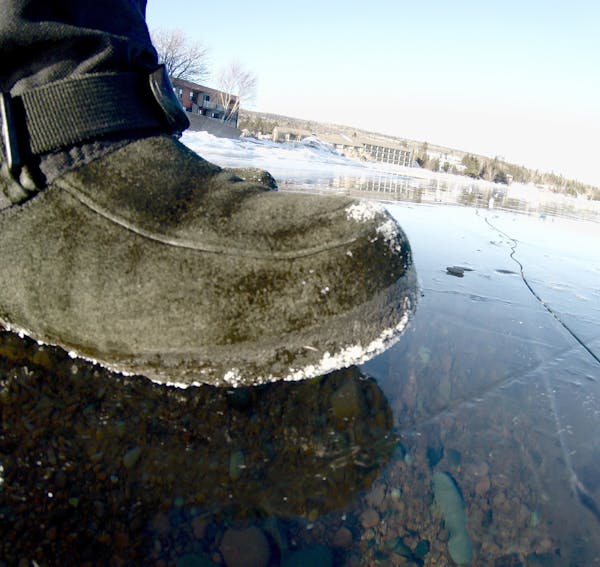Musher Richie Diehl consoles his restless Alaskan huskies with a couple of pats and soothing words, assuring them that their turn to strut their stuff down Anchorage's 4th Avenue as part of the ceremonial start to the Iditarod sled dog race is coming soon. Dozens of other Alaskan and international mushers are doing likewise with their 16-dog teams, and a chorus of yelps, barks, whines and prolonged, wolflike howls has replaced the usual sound of traffic on the closed-off street.
These born-to-run dogs seem to be saying, "Let's go, let's go, let's go!"
Like many a cruise ship passenger, I've visited Alaska during the summer for fishing and hiking trips, enjoying pleasant temps that usually hover just below 70 degrees. But now I am wearing my snow boots and warmest winter coat, determined to embrace the stark beauty of winter like an Alaskan.
To do that, I've come to experience two mandatory events: the kickoff of the annual Iditarod, "the last great race," and Fur Rendezvous, a 10-day winter carnival that locals call "Fur Rondy" or just "Rondy." (It was slated for Feb. 22-March 3 this year and will take place Feb. 28-March 9 in 2020.)
Rondy began in 1935 as a sports tournament and coincided with the return of fur trappers who came to town to sell their harvest. The fur trade was a vital economic driver in those days, and a fur auction is still a key Rondy event.
The Iditarod always starts on the first Saturday of March, so while it's not part of Rondy, it feels like the grand finale because of the timing.
At last, the big moment comes for Diehl, a six-time Iditarod participant, and his dogs. Yelling "Hike" to get them moving seems unnecessary because there's nothing they would rather do than pull that sled.
The mushers take off in intervals from the corner of 4th Avenue and D Street, travel through several neighborhoods in which they are greeted by cheering fans enjoying the Anchorage equivalent of tailgate parties, and end 11 miles later at Campbell Airstrip.
For these hearty dogs and their mushers, that's the equivalent of a relaxing stroll, but the next day, the laid-back atmosphere turns serious, and it's a dog-eat-dog world.
That's because the community send-off is just the prelude to the real Iditarod, a grueling 1,000-mile trek through the extreme conditions of the Alaskan wilderness that restarts the following day in Willow and ends when the last musher arrives in Nome, typically eight to 15 days later. Some of the perils of the trail are frostbite-inducing subzero temperatures, blinding blizzards and the threat of moose charging the dogs.
I get why mushers are rock stars here. Many Alaskans follow their favorites on the local news.
Rides and reindeer
Anyone can build a snowman, but not just anyone can build a snow Abraham Lincoln or a snow woolly mammoth or a snow troll or … well, the list goes on at the Alaska State Snow Sculpting Championship, a Fur Rondy highlight.
Strolling among these ephemeral artworks at Ship Creek in downtown Anchorage gives new meaning to the phrase "walking in a winter wonderland," and I actually get the Christmas song lodged in my brain, an appropriate if somewhat annoying earworm.
I'm captivated by the sculptures, but not nearly as much as the droves of bundled-up children who have all the exuberance of those Alaskan huskies they have been fawning over. Breaking the parental grip on their hand, they bolt through the alley of whimsical creations until they encounter one that is particularly mesmerizing and come to an abrupt stop, giving their parents a chance to catch up. Towering cartoonlike characters and a fairy tale castle with the tongue-in-cheek title "Sand Castle" are favorites.
Unlike the kids who seem to be immune to the cold — with highs in the low 20s — I start to feel like an ice sculpture myself. The idea of hot food is appealing, so I grab a hot dog from a vendor — and it turns out to be a reindeer sausage. It's delicious and such an Alaskan thing to do.
Running of the Reindeer is a popular carnival event, and I quip that this must be what happens to the slow ones.
This wacky race where human "herds" run with live reindeer from a nearby farm is a crowd favorite, partly because of the bizarre costumes. A tutu-wearing Batman is in the lead for a while, but he's overtaken by a furry pickle. Some guys dressed for a luau sprint like they are being chased by angry bulls in Pamplona, Spain, instead of merely being accompanied by likable domesticated creatures that pull Santa's sleigh.
There's no real costume theme, and the surreal, frenzied scene feels like something between an Arctic Halloween party and Mardi Gras.
If that's not crazy enough for you, claim your vantage point for the outhouse race. It's just what it sounds like, a contest to see who can push (or pull) their toilet down the street the fastest.
If you want to give your kids a thrill, head to the Alaskan Native blanket toss. No blankets are tossed, but plenty of kids are. A large bearded seal hide held by dozens of volunteers serves as a trampoline of sorts. A few preliminary bounces, then the kids are propelled into the air. Most land with a smile and beg to do it again. In northern Alaskan Native communities, the blanket toss celebrates a successful whale hunting season.
I never thought of Anchorage as a year-round destination, but as I wrapped up my time in this city with a wilderness vibe, I had no regrets about venturing into its frozen landscape in wintertime. There were times when I couldn't feel my toes, but what I did feel was a sense of camaraderie with the people that call this cold, distant place home.
Indiana-based Tracey Teo writes about food and travel.
